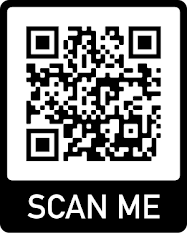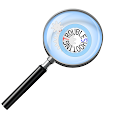Taxi and Ground Movement Operations
"Never cross a hold line without explicit ATC instructions. If in doubt, ASK! You may not enter a runway unless you have been: instructed to cross that specific runway; cleared to take off from that runway; or instructed to position and hold on that specific runway."
JUN 30th, 2010 from now on
This change establishes the requirement that an explicit runway crossing clearance be issued for each runway (active/inactive or closed) crossing and requires an aircraft/vehicle to have crossed the previous runway before another runway crossing clearance may be issued. At airports where the taxi route between runway centerlines is less than 1,000 feet apart, multiple runway crossings may be issued after receiving approval by the Terminal Services Director of Operations.
Change FAA Order JO 7110.65, paragraph 3-7-2, to read as follows:
3-7-2. TAXI AND GROUND MOVEMENT OPERATIONS
Issue the route for the aircraft/vehicle to follow on the movement area in concise and easy to understand
terms. The taxi clearance must include the specific route to follow. When a taxi clearance to a runway is
issued to an aircraft, confirm the aircraft has the correct runway assignment.
You must stop and wait for crossing RWY 31 at the intersection DELTA, even if you have received clearance for entire taxi trajectory to RWY 36.
NOTE-
1. A pilot's read back of taxi instructions with the runway assignment can be considered confirmation of runway assignment.
2. Movement of aircraft/vehicles on nonmovement areas is the responsibility of the pilot, the aircraft operator, or the airport management.
a. When authorizing an aircraft/vehicle to proceed on the movement area, or to any point other than assigned takeoff runway, specify the route/taxi instructions. If it is the intent to hold the aircraft/vehicle short of any given point along the taxi route, issue the route and then state the holding instructions.
NOTE-
1. The absence of holding instructions authorizes an aircraft/vehicle to cross all taxiways that intersect the taxi route.
2. Movement of aircraft/vehicles on non-movement areas is the responsibility of the pilot, the aircraft operator, or the airport management
Phraseology, no change.
EXAMPLE-
“Cross Runway Two Eight Left, hold short of Runway Two Eight Right.”
“Taxi/continue taxiing/proceed to the hangar.”
“Taxi/continue taxiing/proceed straight ahead then via ramp to the hangar.”
“Taxi/continue taxiing/proceed on Taxiway Charlie, hold short of Runway Two Seven.”
or
“Taxi/continue taxing/proceed on Charlie, hold short of Runway Two Seven.”
b. When authorizing an aircraft to taxi to an assigned takeoff runway, state the departure runway followed by the specific taxi route. Issue hold short restrictions when an aircraft will be required to hold short of a runway or other points along the taxi route.
PHRASEOLOGY-
“Runway (number) taxi via (route as necessary).”
or
“Runway (number) taxi via (route as necessary)(hold short instructions as necessary).”
EXAMPLE-
“Runway Three Six Left, taxi via taxiway Alpha, hold short of taxiway Charlie.”
or
“Runway Three Six Left, taxi via Alpha, hold short of Charlie.”
or
“Runway Three Six Left, taxi via taxiway Alpha, hold short of Runway Two Seven Right.”
or
“Runway Three Six Left, taxi via Charlie, cross Runway Two Seven Left, hold short of Runway Two Seven Right.”
or
“Runway Three Six Left, taxi via Alpha, Charlie, cross Runway One Zero.”
c. Aircraft/vehicles must receive a clearance for each runway their route crosses. An aircraft/vehicle must have crossed a previous runway before another runway crossing clearance may be issued.
NOTE
A clearance is required for aircraft/vehicles to operate on any active, inactive, or closed runway(s) except for vehicles operating on closed runways in accordance with a Letter of Agreement (LOA).
EXAMPLE-
“Cross Runway One Six Left, hold short of Runway One Six Right.”
d. When an aircraft/vehicle is instructed to “follow” traffic and requires a runway crossing, issue a runway crossing clearance in addition to the follow instructions and/or hold short instructions, as applicable.
EXAMPLE-
“Follow (traffic), cross Runway Two Seven Right.”
or
“Follow (traffic), cross Runway Two Seven Right, hold short Runway Two Seven Left.”
e. At those airports where the taxi distance between runway centerlines is less than 1,000 feet, multiple runway crossings may be issued with a single clearance. The air traffic manager must submit a request to the appropriate Terminal Services Director of Operations for approval before authorizing multiple runway crossings.
REFERENCE FAA
OJO 7210.3, Para 10-3-10 MULTIPLE RUNWAY CROSSINGS
Mostrando postagens com marcador airport overnight. Mostrar todas as postagens
Mostrando postagens com marcador airport overnight. Mostrar todas as postagens
sexta-feira, 2 de julho de 2010
quinta-feira, 26 de novembro de 2009
Passengers overnight on board - Continental Airlines and ExpressJet Airlines
As he taxied to the terminal, the aircraft captain asked to deplane the passengers but the ground crew refused because there were no Transportation Security Administration staff in the airport at that hour. The captain tried several times but eventually had to take no for an answer even though TSA rules would have allowed the passengers to get off as long as they were kept in a sterile area of the airport. It's the first time airlines have been punished for a ramp delay, Lahood said.
Office of Public Affairs
DOT 182-09
Tuesday, November 24, 2009
Contact: Bill Mosley
Tel: (202) 366-4570
DOT Issues Precedent-Setting Fines for Rochester, MN Tarmac Delay Incident
Office of Public Affairs
DOT 182-09
Tuesday, November 24, 2009
Contact: Bill Mosley
Tel: (202) 366-4570
DOT Issues Precedent-Setting Fines for Rochester, MN Tarmac Delay Incident
The U.S. Department of Transportation today levied a total civil penalty of $100,000 against Continental Airlines and ExpressJet Airlines for their roles in causing the passengers on board Continental Express flight 2816 to remain on the aircraft at Rochester International Airport for an unreasonable period of time on Aug. 8, 2009. Continental also provided a full refund to each passenger and also offered each passenger additional compensation to tangibly acknowledge their time and discomfort. In addition, DOT assessed a civil penalty of $75,000 against Mesaba Airlines, which provided ground handling for the flight, for its role in the incident.
These precedent-setting enforcement actions involve consent orders that reflect a settlement by the carriers of violations alleged by DOT’s Aviation Enforcement Office. They are the first enforcement orders punishing carriers for extended tarmac delays, as well as the first time a carrier acting as a ground handler for another airline has been punished for failing to properly help passengers leave an aircraft during an unreasonably long tarmac delay.
“I hope that this sends a signal to the rest of the airline industry that we expect airlines to respect the rights of air travelers,” said U.S. Transportation Secretary Ray LaHood. “We will also use what we have learned from this investigation to strengthen protections for airline passengers subjected to long tarmac delays.”
The Aviation Enforcement Office’s investigation found that all three carriers violated the law that prohibits unfair and deceptive practices in air transportation for their respective roles in the incident, in which a Continental Express flight from Houston to Minneapolis/St. Paul operated by ExpressJet was diverted to Rochester due to bad weather in Minneapolis. The aircraft reached Rochester about 12:30 a.m. and the passengers were stranded aboard the aircraft until approximately 6:15 a.m. when they were finally deplaned into the terminal.
Prior to diverting to Rochester, ExpressJet contacted Mesaba personnel at Rochester to request assistance at the airport, which Mesaba, the only airline staffing the airport at the time, agreed to provide. Shortly after the flight arrived in Rochester, the ExpressJet captain asked the Mesaba employee handling the flight whether the passengers could deplane into the airport terminal. In response to this initial inquiry, and other subsequent inquiries, the captain was told that passengers could not enter the terminal because there were no Transportation Security Administration (TSA) screeners on duty at that hour, despite the fact that TSA rules would have allowed the passengers to enter the airport as long as they remained in a sterile area.
Continental and ExpressJet, in separate orders, were found to have violated the prohibition against unfair and deceptive practices in air transportation because ExpressJet failed to carry out a provision of Continental’s customer service commitment requiring that, if a ground delay is approaching three hours, its operations center will determine if departure is expected within a reasonable time, and if not the carrier will take action as soon as possible to deplane passengers. ExpressJet also failed to take timely actions required by its procedures, including notifying senior ExpressJet officials and providing appropriate Continental officials with notice of the delay. Continental was found to have engaged in an unfair and deceptive practice since, as the carrier marketing the flight 2816, Continental ultimately is responsible to its passengers on that flight.
The consent order covering Mesaba finds that the carrier engaged in an unfair and deceptive practice when it provided inaccurate information to ExpressJet about deplaning passengers from flight 2816.
In November 2008, the Department proposed a rule to enhance airline passenger protections, including a provision that would require airlines to adopt contingency plans for lengthy tarmac delays and incorporate them in their contracts of carriage. A final rule is expected by the end of this calendar year.
Assinar:
Postagens (Atom)










